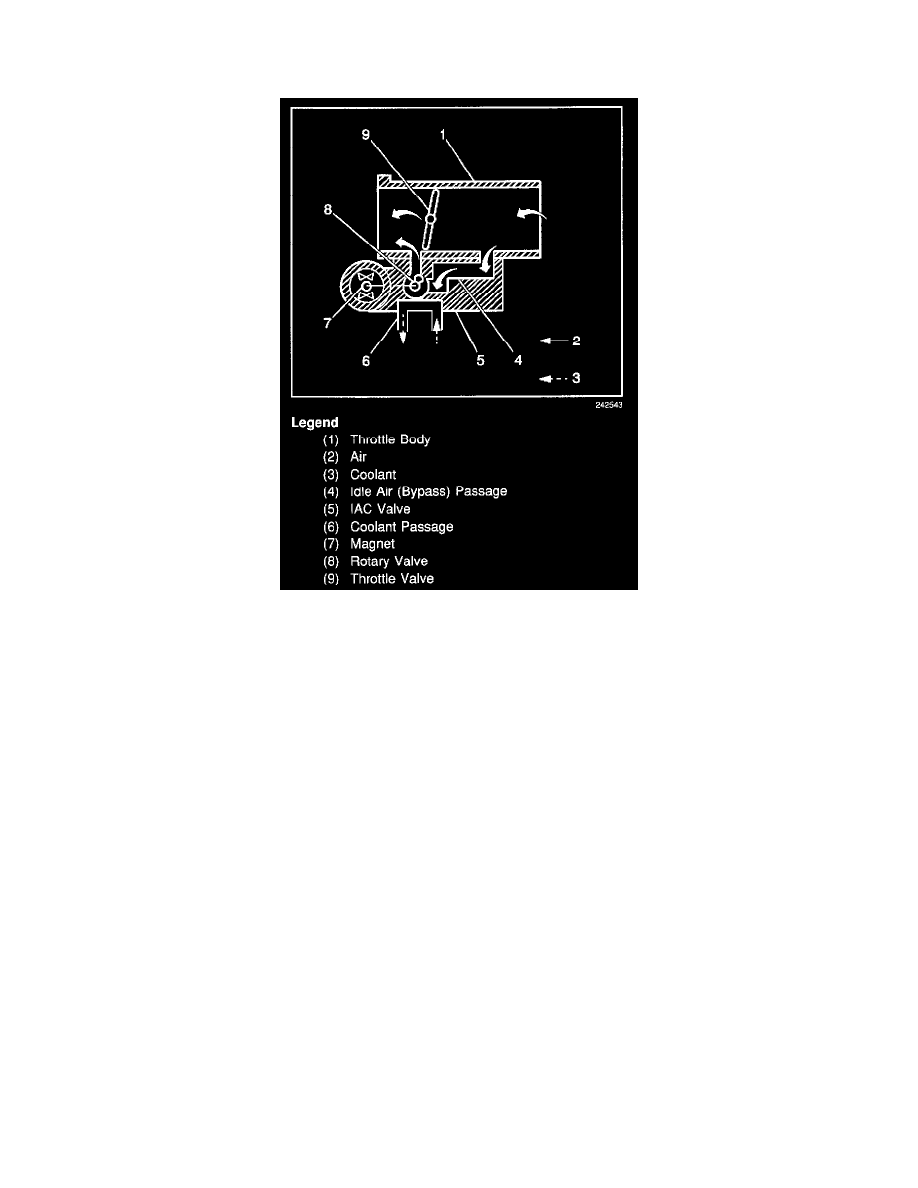Metro L4-079 1.3L VIN 2 MFI (2001)

Idle/Throttle Speed Control Unit: Description and Operation
Idle Speed Control (ISC) Motor
Idle Air Control (IAC) Valve
The Idle Air Control (IAC) valve is attached to the underside of the throttle body. The Powertrain Control Module (PCM) uses the IAC valve in order
to control engine idle speed. The PCM controls the IAC valve by varying the ON time of a repeating ON/OFF signal (duty cycle). A magnet inside the
IAC valve operates a rotary valve that controls the opening of the idle air (bypass) passage in the throttle body. The idle air passage allows air to enter
the engine without passing over the throttle valve. The strength of the magnet in the throttle body is concurrent with the current flow in the IAC circuit.
The IAC valve contains an engine coolant passage that enables the IAC valve to operate more efficiently at cold temperatures. The IAC valve enables
the PCM to easily control engine idle speed by precisely metering the engine's air intake at closed throttle.
Operation
The Powertrain Control Module (PCM) uses the IAC valve in order to control engine idle speed. The PCM communicates with the IAC valve by
varying the ON time of a repeating ON/OFF (duty cycle). A magnet inside the IAC valve operates a rotary valve that controls the opening of the idle
air (bypass) passage in the throttle body. The idle air passage allows air to enter the engine without passing over the throttle valve. The strength of the
magnet in the IAC valve is related to the current flow in the IAC circuit.
The PCM increases the ON time of the IAC valve command in order to increase the idle air passage opening. A larger idle air passage opening allows
more air to enter the intake resulting in an increase in engine speed.
